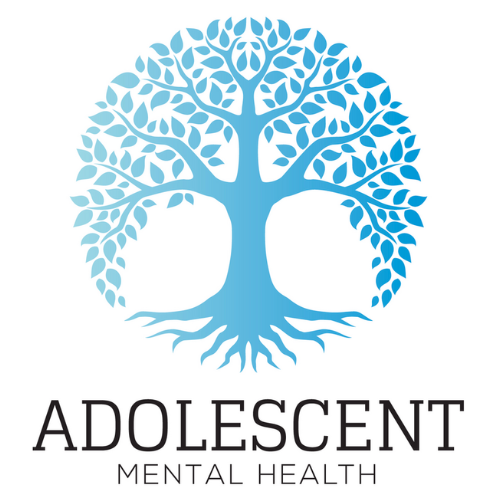Prioritizing Student Mental Health for Academic Success
Mental health is a critical issue for students across all levels of education, especially in higher education. On every campus, mental health challenges interfere with academic performance, well-being, and daily functioning. Depression, anxiety, and suicidal ideation are increasing among students in tertiary education, from college to university and medical school. Mental health support is essential to help students reach their goals and maintain balance in their lives.
The Depth of the Mental-Health Crisis
Across the United States, students face a rising mental health crisis. Data from public health sources shows growing levels of stress, insomnia, and emotional struggle. Many students report feeling overwhelmed by peer pressure, bullying, academic demands, and lack of social connection. Some experience loneliness, discrimination, or challenges related to gender or disability. Others face pressure related to employment, education, or family expectations.
States like Massachusetts, Pennsylvania, Michigan, New Hampshire, Indiana, Virginia, South Carolina, North Carolina, Nevada, Minnesota, Colorado, Connecticut, Oregon, Wisconsin, Ohio, and Utah have reported increases in emergency room visits for youth mental health concerns.
The U.S. Surgeon General Vivek Murthy has called for national attention to the crisis, pointing to the need for stronger infrastructure, increased access to services, and improved health equity for students from all backgrounds.

Stressed Out Students Can’t Do This Anymore
Students across campuses are reaching a breaking point. Chronic stress leads to panic, low motivation, sleep issues, and burnout. These issues can trigger eating disorders, addiction, or worsening mental health disorders. Without support, students may withdraw socially, fail to meet deadlines, or stop attending school.
Many students lack access to health care, medication, or proper evaluation. Others face social stigma that discourages them from seeking help. The rise of the internet and social media also contributes to pressure and comparison, harming self-esteem and coping abilities.
Students need strong mental health programs, therapy, and crisis intervention strategies on campus. Student affairs departments and faculty leadership must take an active role in reducing mental health stigma and creating supportive environments.
Why is Mental Health Important for Students?
1. Student Academic Achievement
Mental health affects attention, memory, and productivity. Students with good mental health are more likely to attend class, complete assignments, and maintain motivation. They show better behavior, achieve higher grades, and participate more actively in the learning curriculum.
Students with untreated mental health concerns often struggle to focus, lack energy, and miss academic targets. This affects graduation rates and future employment outcomes.
2. Early Detection
Recognizing mental health issues early helps prevent long-term damage. Students showing signs of depression, panic, or isolation benefit from timely support. Schools can use tools such as Mental Health First Aid training and regular screenings to catch problems early.
Educators, parents, and staff must know how to spot warning signs and connect students with resources. Early action can reduce hospital visits and lower the risk of suicide.

3. Meeting Student Mental Health Needs
Meeting mental health needs means making resources easy to find and use. This includes therapy, counseling, peer support, and wellness activities like meditation or stress management workshops. Support should be inclusive of students with disabilities, marginalized identities, and those facing economic hardship.
Partnerships between education leaders, health policy makers, and nonprofit organizations can expand care on and off campus. Schools should also consider the social determinants of health, such as housing, food security, and access to health insurance, which all impact mental wellness.
4. Mental Health Awareness and Education
Mental health education helps students understand their feelings and take action. When students learn about prevention, coping skills, and emotional regulation, they are more prepared to manage challenges.
Schools should integrate mental health awareness into everyday education, using classes, workshops, and wellness days to reduce stigma. Teaching students about mental illness, therapy, and emotional resilience increases understanding and builds stronger community connections.
Advocacy efforts led by students, faculty, and mental health professionals also raise awareness and drive policy change. Programs supported by institutions such as the American Academy of Pediatrics and public reference guides help inform schools on best practices.
How to Support Mental Health
Supporting mental health on campus means creating a complete support system. Key actions include:
Accessible therapy and licensed professionals on site
Peer-led groups to promote understanding and mutual support
Building lifestyle habits like healthy eating, sleep hygiene, and mindfulness
Inclusive school policy that addresses mental illness and discrimination
Collaboration with families, health providers, and law enforcement when needed
Promoting mental health awareness across departments, especially student affairs and leadership
Schools must treat mental health as a core part of academic life. It’s not an extracurricular issue—it’s a fundamental part of student success.

What is a Mental Health Disorder?
A mental health disorder is a condition that affects thinking, mood, and behavior. These disorders may interfere with learning, relationships, and daily routines. Mental disorders are medical in nature, and they can affect anyone, regardless of age, gender, or background.
Mental disorders may stem from trauma, family history, environmental stress, or biological changes. Many students experience a disorder for the first time during adolescence or young adulthood, especially in college or university.
Symptoms often include changes in sleep, energy, mood, focus, and feeling. Early signs should be taken seriously, and students should be encouraged to seek help without fear of stigma.
Common Mental Health Disorders in Students
Students may face several common mental health conditions, including:
Depression: Feelings of sadness, fatigue, and disinterest in activities.
Anxiety disorders: Excessive worry, avoidance, and physical tension.
ADHD: Trouble concentrating, impulsivity, and restlessness.
Substance use disorders: Misuse of alcohol, drugs, or medications.
Eating disorders: Unhealthy thoughts about food, weight, and body image.
PTSD: Flashbacks, fear, or numbness related to past trauma.
Bipolar disorder: Mood swings between highs and lows that disrupt function.
With proper care—including therapy, peer support, and structured routines—students can learn to manage symptoms and continue with their education.
Frequently Asked Questions
1. What are the most common mental health issues affecting students today?
Students frequently experience mental health conditions such as anxiety, depression, ADHD, substance use disorders, and suicidal ideation. These issues are often triggered by academic pressure, social isolation, family stress, and identity-related challenges. Early signs can include sleep changes, low motivation, poor concentration, and emotional outbursts. Left untreated, these conditions can interfere with education, relationships, and daily functioning.
2. How can schools and colleges support students’ mental health needs?
Schools and colleges can support student mental health by providing on-campus therapy, mental health education, and peer support programs. Staff should receive training in crisis intervention and mental health first aid. Institutions can also reduce stigma through open conversations, accessible services, and partnerships with local care providers. Creating a safe, inclusive environment is key to helping students thrive emotionally and academically.
3. What treatment options are available for adolescents struggling with mental health in Orange County?
At Adolescent Mental Health in Orange County, we offer personalized therapy for teens facing depression, anxiety, stress, suicidal ideation, and behavioral issues. Our licensed clinicians provide individual therapy, family therapy, and group counseling tailored to adolescent needs. We use evidence-based methods to promote emotional regulation, resilience, and academic success. Our programs focus on prevention, healing, and long-term well-being in a supportive environment.
4. When should a parent or school refer a student to professional mental health care?
A referral should be made when a student shows ongoing emotional distress, changes in behavior, or signs of risk such as self-harm, substance abuse, or suicidal thoughts. If a student withdraws from school life or struggles to cope with daily responsibilities, professional care is recommended. Adolescent Mental Health in Orange County offers thorough evaluations and therapy services to help families take the next step toward recovery and stability.









